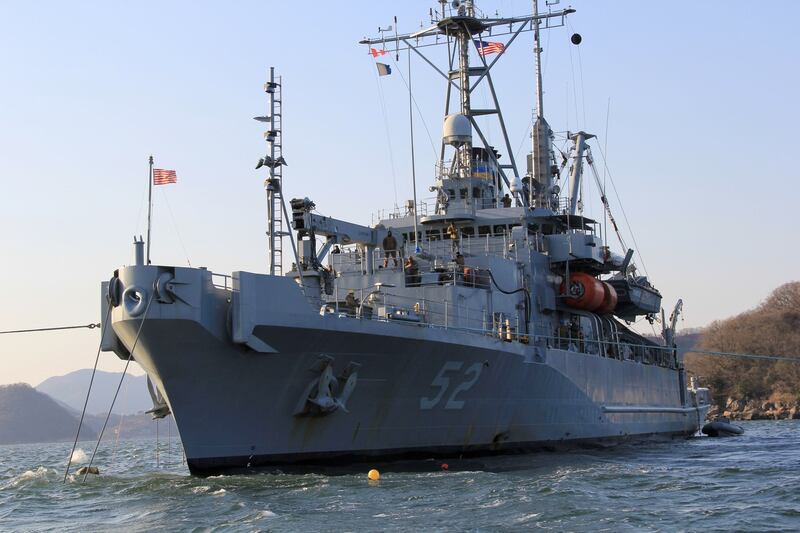The Japanese Coast Guard has issued a navigation warning for mariners to beware of salvage operations as the U.S. Navy is preparing to recover the F-35C fighter that crashed last week in the South China Sea.
An expert said it may take until the end of March until the plane is recovered.
The F-35C Lightning II fighter jet crashed into the deck of the aircraft carrier USS Carl Vinson and then fell into the water on Jan. 24.
Japan Coast Guard's Hydrological and Oceanographic Department (JHOD) in the navigation warning issued over the weekend said salvage operations are being carried out in northern part of the South China Sea "until further notice."
A navigation warning is a public advisory notice to mariners about changes to navigational aids and current marine activities or hazards including fishing zones and military exercises.
According to the coordinates provided by the JHOD, the salvage area is about 170 nautical miles off the western coast of Luzon Island, the Philippines.

The U.S. Navy has yet to confirm this is the salvage operation for their fighter but a spokesman said last week that the Navy "is making recovery operations arrangements for the F-35C aircraft" involved in the crash aboard the USS Carl Vinson which was conducting exercise in roughly the same area in the South China Sea.
Experts told RFA the water depth at the site is around 3,000 meters to 3,500 meters.
It is unclear whether a salvage vessel has been dispatched. The 7th Fleet has one salvage ship based in Hawaii, the USNS Salvor, and it would take 10 days for it to reach the location.
“The first step would be sending an UUV (unmanned underwater vehicle), or a submersible vessel, down there to survey the site, to locate the sunken plane, to see if it is still intact which is apparently the case this time,” said Carl Schuster, a retired U.S. Navy captain and former director of operations at the U.S. Pacific Command's Joint Intelligence Center.
A photo and a video clip circulating on social media last week and later verified by the U.S. 7th Fleet shows the F-35C landed in the water the right side up and appeared to be intact before sinking.
“Then the next step would be to attach flotation material to the plane to lift it up,” explained Schuster, adding: “It would probably take five to seven working days to attach everything and start lifting.”
The recovered plane would then be put on a transportation vessel. There are many challenges though, he warned, including water currents, poor underwater visibility and the weather.
“If the weather holds out, everything goes smoothly, you’re looking at a 15- to 20-day, three-ship operation once the salvage vessels are on site,” the naval specialist said.
He predicted that if the ships get there by mid-February, the mission would be complete before the end of March.

Costly operation
The U.S. Navy does not normally reveal the cost of their activities, including salvage operations, but “we’re looking at several million dollars to do the recovery [of the crashed aircraft],” said Schuster.
The $100-million F-35, developed by the American aerospace giant Lockheed Martin Corp., is a state-of-the-art aircraft with superior stealth performance that is difficult to catch on radar.
According to Lockheed Martin, the F-35C variant is “the first and world’s only stealth strike fighter designed and built explicitly for Navy carrier operations.” The first F-35C was put into operation in only 2019.
China last week said it had “no interest” in recovering the wreckage that may contain sensitive technological information.
However, analysts said Beijing would still closely monitor the area and the recovery process, and the U.S. would not want the wreckage to fall into China’s hands.
“I think it's obvious that the Chinese would be looking for the wreckage as well,” Richard Bitzinger, senior fellow at the S. Rajaratnam School of International Studies in Singapore, said in an earlier interview with RFA.
He said pieces of wreckage can provide valuable information about the F-35, such as its skin, stealth sensors, and data processing.
